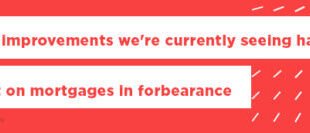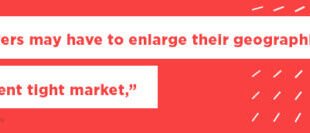
The dips keep on coming. This week’s Freddie Mac average on a 30-year fixed-rate mortgage dropped to 2.67%, another historic low. Freddie Mac’s Chief Economist Sam Khater was optimistic in this week’s release, saying “Homebuyer sentiment is sanguine and purchase demand shows no real signs of waning at all heading into next year.”
The nagging issue for buyers is affordability. The last CaseShiller home price index showed a 7.0% increase in home prices, much higher than the previous report of 5.8%. Many industry executives point to home prices as the biggest headwind facing potential buyers, especially first-timers.
This week Forbes released a compilation of predictions for the 2021 housing market. In it, realtor.com chief economist Danielle Hale said she expects to see home prices “rise another 5.7% on top of 2020’s already high levels.” Hale continued, “High buyer demand and still-lagging supply will keep prices growing, but at a slower pace than 2020 as buyers content with mortgage rate and price increases that create affordability challenges.”
Those looking to build a new home are also facing a distinct pricing challenge. The latest National Association of Home Builders and Wells Fargo Housing Market Index, which measures builder confidence, dropped by four points to 86. While lower, that is still an excellent mark–the index had never hit 80 before this year. The main issues facing builders are a persistent lack of land, materials and a shortage in skilled labor.
The low rates have kept the refinance market going significantly. The latest Mortgage Bankers Association survey shows a 105% year-over-year increase in refinances. The MBA’s Associate Vice President for Economic and Industry Forecasting, Joel Kan, noted, “The ongoing strength in the housing market has carried into December. Applications to buy a home increased for the fourth time in five weeks, as both conventional and government segments of the market saw gains. Government purchase applications rose for the sixth straight week to the highest level since June – perhaps a sign that more first-time buyers are entering the market.”
Markets await decision from Congress
Markets were hot this week with news of a second COVID-19 vaccine approved by the FDA as well as the news that Congress was close to a decision on a second federal stimulus package. The Dow Jones Industrial Average hit its highest-ever closing level at 30,303.37 Thursday afternoon. The S&P 500 and Nasdaq both hit intraday trading highs on Thursday as well as closing records, ending the day at 3,722.48 and 12,764.74, respectively.
All eyes are on Congress Friday as they work to come to an agreement on both a federal stimulus package and a spending bill to keep the government operational. The $ 900 billion relief bill reportedly contains another round of direct payment to Americans along with enhanced unemployment benefits. As it stands, if no bill is passed, the government will shut down on Saturday and pandemic protections would expire the day after Christmas.
Of Note:
- The Federal Reserve kept overnight lending rates unchanged, at or near 0%.
- The Fed also stood by its commitment to purchase mortgage-backed securities and Treasuries to support the economy.
- The Federal Reserve Open Market Committee revised up its 2021 GDP forecast to 4.2%. It also revised up its 2020 prediction to a 2.4% drop compared to a 3.7% drop.
- The Labor Department reports 885,000 initial unemployment claims for the past week.



